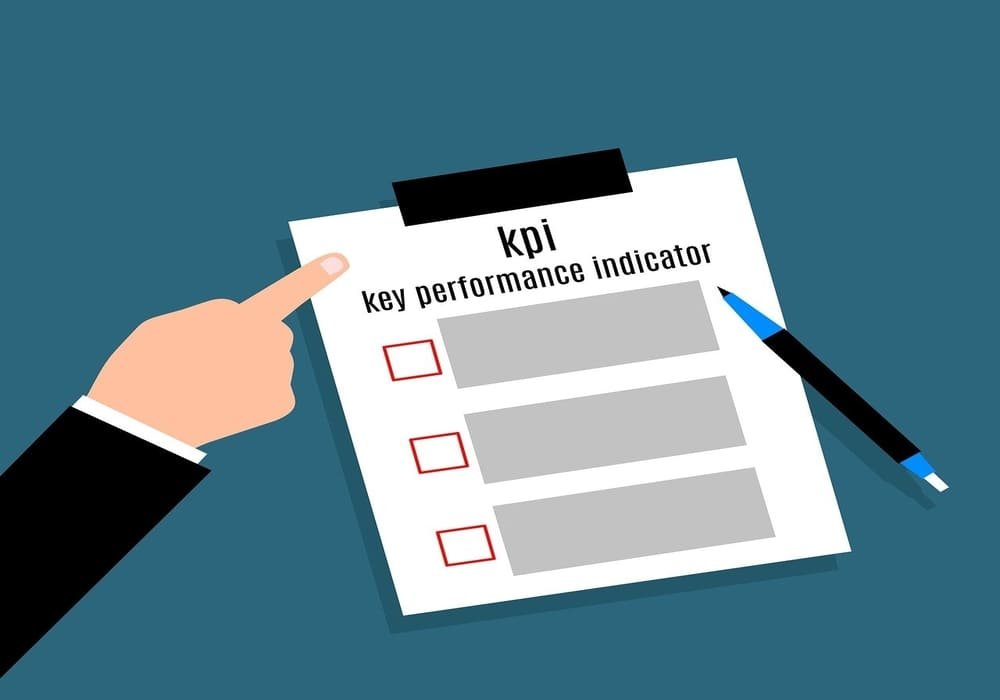KPI Key Performance Indicators
A key performance indicator (KPI) is a quantitative measure that allows you to track the progress of your team or organization against your key business objectives. KPIs can be used at various levels: at the level of a company, a team or even an individual, depending on the measures to be tracked (also called “metrics”, or simply indicators). If effective, your KPI will help you know if you are on track to meet your strategic goals.
Is this the first time that you have defined a KPI? This article will introduce you to the differences between KPIs and other goal setting methodologies. You will also learn how to identify key metrics to monitor and the best strategy for establishing effective KPIs.
How to establish an effective KPI?
To be effective, your KPI must be both specific and measurable. KPIs are used to clearly establish what your team wants to achieve and when you want to achieve them, as well as how you will measure their achievement.
To be effective, a KPI must:
- Help you achieve your strategic goals
- Guide your resource management plan
- Be measurable
- Concern something you can control and influence
- Make the link between your measurement indices and your strategic objectives
- Allow team members to clearly know how their projects contribute to the company’s objectives
KPI or Objectives and key results (OKR, alternatively OKRs)?
If you’re familiar with ICPs, you’ve probably heard of OKRs. Do you get lost in all these acronyms? Below are their definitions and differences.
Key Performance Indicator: KPIs allow you to effectively measure your results over time. To be effective, your KPI must follow a measurable value that your team can influence within a reasonable time frame.
Objectives and Key Results (OKRs): OKRs are based on the I will model [objective], measured by [key result]. The goal is the goal to be achieved, and the key outcome is the measure of your progress toward the goal.
OKRs allow you to see your goals from a holistic perspective, while KPIs are comparable to key outcomes (a KPI can be a key outcome, by the way). In contrast, key results can be quantitative or qualitative (depending on what your goal measures), while KPIs should always be quantifiable.
KPI example:
Increase the net recommendation rate by two points in fiscal year 20xx.
OKR example:
- Objective: to surprise and satisfy our customers in order to gain their loyalty.
- Key result: Create positive buzz through virtual events and social media content.
- Key result: reduce the attrition rate to less than 2% per month.
- Key result: Increase the net recommendation rate by two points in fiscal year 2021.
KPI or commercial indicator?
Once you’ve established your KPIs, business metrics are used to measurably quantify your progress against your end goal.
KPI example: Attract 25,000 more visitors to the website in the second quarter.
Example of a business metric: number of unique page views on the website.
Examples of KPIs to measure engagement on your site
Measuring the KPIs of your website is an essential step in your digital strategy. It is recommended to check them regularly, at least once a month. You can use Google Analytics for this.
Number of visitors (number of sessions)
This is the number of people who visited your site. To analyze this data, it is important to compare a given period in relation to previous years or months. This will allow you to analyze the evolution of the number of leads on your site. To do this, go to “Audience”> “Overview”.
Seen pages
It remains essential to know which pages of your website are the most viewed. Thus, you will be able to determine your strengths. For example, if you have a blog, you will be able to find out whether or not your articles are successful in order to adapt and improve your content strategy. To do this, go to “Behavior”> “Site content”> “All pages”.
Read also: SEO Optimized URLs | How to make them Google Friendly?
Traffic source
Learning where the people who visit your website come from (Google, social networks, referral sites, etc.) is an essential asset. This will allow you to know precisely which sources of traffic are really prolific for your site and which ones to improve in the long term. To do this, select the secondary dimension “Acquisition”> “Source”.
Menu that displays “Acquisition” and “Source” in the secondary dimension of Google Analytics.
Conversion rate
The conversion rate, or also conversion rate, is the number of actions taken on your site divided by the number of visits. The conversion rate analysis shows whether your site is generating qualified visits and therefore potential new customers. You can thus analyze the conversion rate according to the different objectives that you have defined. For example :
- Sales
- Registration
- Submission of a form
- Uploading a document
- Subscription to a newsletter, etc.
How to define an effective KPI?
KPIs help you set and achieve quantifiable goals. Before you begin, clearly establish the goal you want to achieve or the strategic plan you want to accomplish with these KPIs. Once you’ve established these, communicate them to key project stakeholders and send real-time updates so everyone can follow progress.
1. Define your business goal
Before creating a KPI, you need to define your goals, otherwise you will not be able to stick to your strategic plan. According to recent research, only 16% of knowledge workers say their company clearly defines its goals and communicates transparently about them.
If you haven’t already, create a strategic plan to define your organization’s goals for the next three to five years. Then divide that plan into annual goals. Depending on how fast your team is progressing, you can set annual, semi-annual, or quarterly KPIs.
2. Identify key business metrics
Once you have defined your business goals, you need to decide which business metrics will allow you to track the progression effectively. These indicators have a direct impact on the achievement of your goals.
As we said earlier, KPI stands for “key performance indicators”. Several metrics or indicators can affect your end goal. To set the right KPI, you need to identify and track the most important things to measure. Note, however, that not all projects or tasks are associated with KPIs.
You do not know where to start ? Take a look at the metrics that are most relevant to each department in your organization.
Examples of financial indicators
- Annual recurring income
- Net income retention rate
- Net profit margin
- Earnings before interest, taxes and depreciation charges
- Operating funds
- Cash flow
Examples of customer-related indicators
- Net recommendation rate
- Customer acquisition cost
- Customer satisfaction
- Customer Loyalty
- Customer attrition rate
- Total number of paying customers
- Number of new clients
Examples of indicators related to processes and operations
- Production time or supply time
- Number of complaints or bug tickets
- Indicators related to the supply chain (average time to collect trade receivables, for example)
Indicators related to employees or human resources
- Employee retention rate
- Employee satisfaction
- Wage competitiveness ratio
Sales related indicators
- Acquisition rate
- Number of customers lost to competition
- Market penetration rate
Marketing indicators
- Qualified Leads
- Lead conversion rate
- Number of subscribers on social networks
- Number of content downloads
- Email click rate
- Share of voice (measures the percentage of media spending by a company compared to the total media expenditure for the product, service, or category in the market)
3. Establish your KPIs
When you have identified the goal to be achieved and the elements to be measured to achieve it, you can establish your KPIs. We recommend that you follow the SMART methodology to ensure that your KPIs are quantifiable, specific and actionable.
The acronym SMART stands for…
- Specific
- Measurable
- Attainable
- Realistic
- Temporally defined
KPI example
Imagine that you are part of the Customer Success Team. Your overall goal is to improve customer support to reduce the attrition rate. Average ticket resolution time is a key metric for you, as you want your team to respond to tickets within 10 hours. Right now, your team responds to requests in an average of 14 hours. Here’s an example of a SMART and effective KPI for tracking your progress toward this goal of achieving an average ticket resolution time of 10 hours or less by the end of the first quarter.
This KPI is specific and measurable (10 hours or less), achievable and realistic (your goal is to reduce ticket resolution time from four hours in three months) and temporally defined (this KPI must be completed by the end of of the first trimester).
4. Track and communicate progress in real time
Like any good goal, your KPI should not be forgotten once it has been set. Consider monitoring and communicating your progress in real time with key stakeholders. How often you share your progress depends on how fast you are going. If your project is progressing quickly, send out updates every week to keep everyone up to date with the changes. For longer-term or slower-moving projects, share reports once or twice a month so you have time to gather enough information.
Write an effective project progress report
If possible, track and communicate your progress in your work management tool. This way, your team members will understand how their individual work contributes to KPIs and therefore to overall business goals. At Asana, we use goal management software to link business goals to the tasks that contribute to them. Using Goals, team members can identify priority projects and focus on higher value tasks.
KPI, OKR, SMART objectives… the choice is not lacking!
KPIs are an effective way to set quantifiable goals in line with your strategic goals. If you think KPIs aren’t right for you, there are a variety of goal setting methodologies available to you. To get started, read our articles on how to set OKRs, better formulate your SMART goals, or create good short-term goals.
The KPIs deserve to be defined precisely to follow the perspectives envisaged by the different strategies of the company.
KPI Examples
Examples of marketing KPIs
Here is a list of frequently used KPIs:
- In CRM, we talk about the number of active customers, churn rate or attrition rate, unsubscribe rate.
- In digital media purchasing, we look more at the click rate of advertising, the visibility rate, the target coverage rate, the memorization rate, the conversion rate or even the customer’s lifetime value.
Here are some examples of KPIs for e-commerce:
- Shopping cart abandonment rate
- Cost of items sold
- Website traffic
- Number of unique visitors and number of recurring visitors
- Time spent on the e-commerce site
- Number of product reviews
- Pages viewed per individual visit
- Blog traffic
- Advertising campaign click-through rate
- Affiliate campaign performance rate
- Number of product reviews
- Cost-per-click traffic volume
- Number of emails sent to customer service
- Number of customer service calls
- Number of chat sessions opened with customer service
- Average resolution time
Examples of KPIs for project management:
- Tasks Created vs Tasks Resolved
- Average task age
- Average task processing time
- Forecast performance index
- Respect of deadlines
- Percentage of achievement of objectives
- Error rate
- Number of supplementary questions
- Motivation level
- Completion rate
Some examples of HR organizational KPIs
- HR turnover
- Number of candidates
- Trial survival rate
- Absenteeism
- Occupational accident rate
- Turnover
Examples of Sales KPIs
- Loyalty rate
- Number of new customers
- Turnaround time or sales cycle
- Number of prospects and conversion rate
- Number of orders canceled
Once the types of performance indicators have been chosen for each area of activity, the manager can assess the performance of his company and anticipate its needs. Finally, it must be ensured that the teams use the dedicated software to measure the KPIs. A successful evaluation necessarily involves the selection of adequate measurement tools.
Sources: Consultant4Companies, PinterPandai, Seobility, Klipfolio, Investopedia
Photo credit: Pixabay



